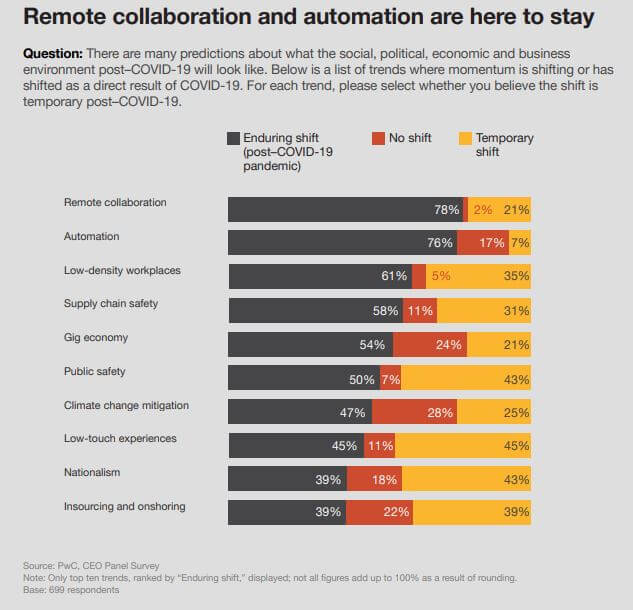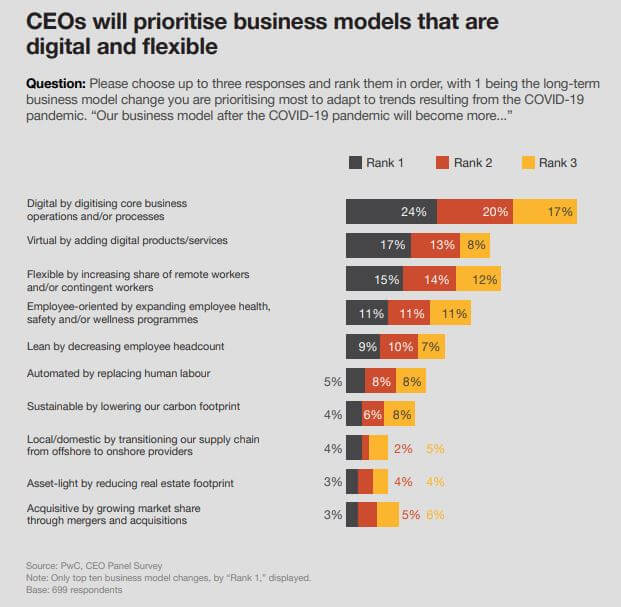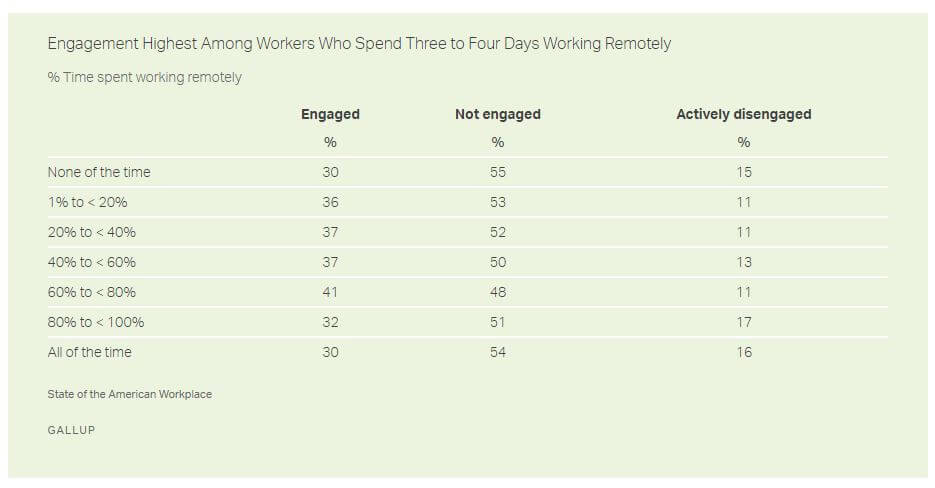The remote work revolution has well and truly arrived, and it’s likely to change the way we work well into the future. COVID-19 triggered a remote working social experiment of sorts through necessity, driving new investment in employee intranet software and communication tools. Organisations fast tracked their digital transformation to drive the employee experience.
So now that we’re entering into new phases of the pandemic, are remote employees here to stay? The answer is absolutely, but perhaps in a more balanced way.
A hybrid workforce combines the best of remote and in-office working, along with wider talent pools, lower office costs and less commuting each week.
ANZ, Atlassian, EY and other big brand names are embracing hybrid office work models. 48% of EY employees in Australia and New Zealand want a mix of working from the office and home, for example.
Gartner research tells us that 82% of company leaders across HR, legal, finance and real estate services plan to support remote working some of the time as employees return to the workplace.
And in a PwC survey of 669 CEOs, 78% agreed that remote collaboration is here to stay for the long-term.

Furthermore, the PwC survey found that CEOs prioritising business models that are digital and flexible, and would enable their employees to work from home long-term.

Has enforced remote working ultimately been a positive or negative?
As it turns out, the answer is both.
On average, global workers in a 2020 study by Barco said they’d prefer to continue working from home at least two days per week. Remote working can mean a better work-life balance for many, increased productivity and better focus, and of course a welcome lack of commuting!
Gallup found that engagement was highest among workers who spend three to four days working remotely.

However, 49% indicated they’re finding remote work less enjoyable now than at the start of the pandemic. Collaboration, creativity and innovation can all suffer when organisations are dealing with a frontline and remote workforce. 42% in the Barco study said that working from home stifled their creativity, and 37% found it harder to collaborate from home.
There’s also the growing concern about the ‘24/7 work culture’, where everyone is expected to be connected at all times without having the opportunity to completely switch off.
It stands to reason that a hybrid option can provide the benefits of both and can help cultivate a positive culture for your remote workforce.
Research from Gallup also suggests an ideal of around 3-4 days at home in a 5-day working week. That’s because people who spend most (but not all) of their time working from home have notably higher levels of work engagement and satisfaction.
The focus on flexibility
A hybrid work environment tends to provide flexibility for the modern worker, which is important: Australians are more likely to remain loyal employees when they have access to flexible working arrangements, and 54% of US office workers said they'd leave their job for one that offers flexible work time.
In essence, employees are seeking work situations where they can quietly focus without distractions, engage in person with their team mates when it comes to collaboration and creativity, and of course have access to the resources and communication tools to do both.
3 key priorities for a successful hybrid workforce
1.Master your digital support systems
No matter whether your team is remote, in-office, on the frontline or somewhere in between, an intuitive and fully-featured intranet makes all the difference in supporting distributed workforce teams and staff. You need the right technology to support the employee experience. There are a myriad of essential tools for managing a hybrid workplace. For example, if your employee intranet software doesn’t include intuitive communication, collaboration and productivity tools, now is the time to be rectifying this.
2.Understand your team’s ideal working environment
Just because these statistics point to a specific blend of hybrid working, it doesn’t necessarily mean it’s right for your organisation. It can be a great idea to arrange an internal survey to understand exactly what your team needs across departments and roles. Could they benefit from one or two days working from home? What will they need in intranet communication software to fulfil their roles?
3.Develop your remote working policies
It’s so important to set expectations and guidelines for remote work so that everyone’s on the same page, especially to foster the frontline employee experience. What are the expectations for each remote working day, and the measures of productivity? What types of support can people access while working remotely, and what are the expectations around attendance and taking regular healthy breaks?
To dive further into the details of remote work success, head over to our article on 12 ways to effectively manage a remote workforce or watch the free on-demand webinar, 'How to Inspire Confidence and Engagement in a Distributed Workforce'.

All the recent digital workplace trends point to a work future that’s adaptable and flexible, so that both productivity and collaboration can thrive and you can continue delivering a great employee experience. If you’d like to review your own employee intranet software, then start the conversation with Elcom today.